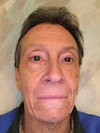 [I can’t remember exactly where and when I first met the documentary photographer Jill Freedman, who died in Manhattan on October 9. (Click here for her New York Times obituary.) I know it came early on in my professional life, in the late 1960s; quite possibly our mutual friend Richard Kirstel — who had provided Jill with some informal mentoring, the only photo education she ever sought or needed — introduced us at an opening.
[I can’t remember exactly where and when I first met the documentary photographer Jill Freedman, who died in Manhattan on October 9. (Click here for her New York Times obituary.) I know it came early on in my professional life, in the late 1960s; quite possibly our mutual friend Richard Kirstel — who had provided Jill with some informal mentoring, the only photo education she ever sought or needed — introduced us at an opening.
Freedman’s forthright, take-no-prisoners relationship to the photo scene matched my own, so we became friends; though we didn’t have much contact outside of bumping into each other at photo-related events, we always enjoyed dishing for a bit when we did. I reviewed her first book, Old News: Resurrection City (1971) in a way she found insightful, which endeared me to her enough that from time to time thereafter, frustrated by persistent critical and curatorial inattention to her work, she asked me for some professional counsel (on which she never acted as I suggested, I should add). (Click here for my review of that book, which I posted when the recent reissue appeared.)
Freedman participated in the Market Diner Bash, a 1972 happening organized and hosted by photographer Neal Slavin and myself at a classic diner on the West Side that shuttered its doors forever a few years ago. My thanks to photographer Harry Wilks for passing along his portrait of Jill at that event, and giving me permission to reproduce it here.
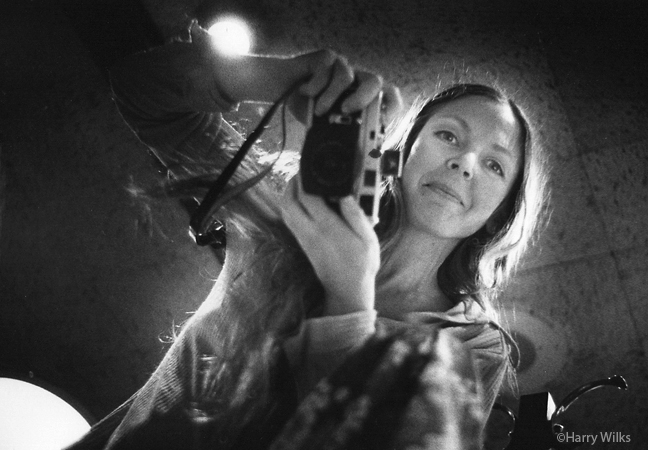
Jill_Freedman at the Market Diner Bash, NYC, 1972. Photo © Harry Wilks
The longest stretch of time Jill and I ever spent together happened in Prague in the summer of 1995. I’d come there to teach in a summer workshop hosted by the Prague House of Photography, created and run in the early post-Velvet Revolution days by a consortium of Czech photographers and still going strong today. A competing, long-since-defunct workshop run by several photo people from the U.S. had invited Jill and another friend, Lyle Bongé. I’d managed to find an inexpensive short-term rental apartment for my two weeks there, a spacious, old-fashioned place with three bedrooms, way more than I and my companion Nina Sederholm needed. So, when Jill and Lyle found out that we’d coincide in our visits, and told me they needed someplace to stay, I suggested they join me in this apartment and foot some of the rent bill. My colleague Harris Fogel, traveling around Europe, showed up unexpectedly — so at some point there were five or six of us hanging out there.
Somehow, upon arrival, Jill — as street-smart a person as I’ve ever known — got snookered by a rogue Prague cab driver who took her for a long ride and charged her $40 U.S. for the 6-block walk from the train station to our apartment. I don’t recall much in the way of subsequent specifics — a lot of vodka, beer, wine, and Becherovka got consumed during that stretch — but Jill and I did end up entertaining our housemates, workshop attendees, and a cluster of Czech photographers by singing Dylan songs and playing the spoons and kazoo in a restaurant’s garden late one night. Someone doubtless has photos of this obscure moment in late 20th-century photography.
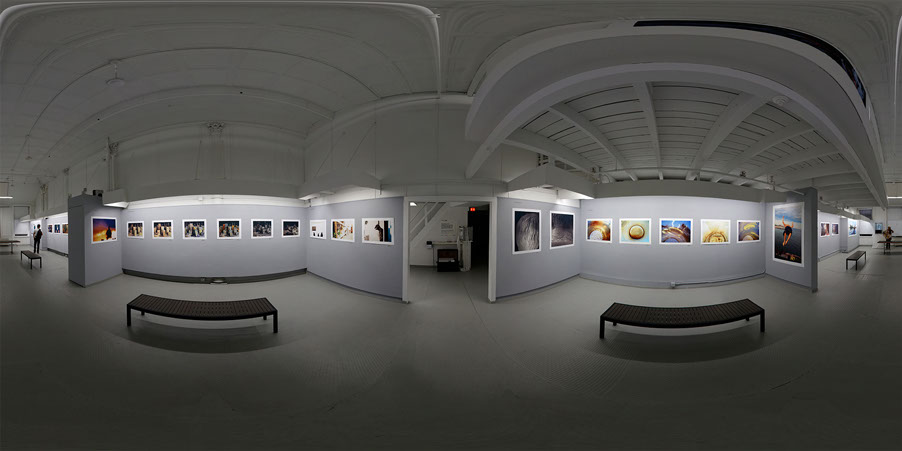
Fugitivart installation, SoHo Photo Gallery, September 2013. Photo © copyright 2013 by Scott Lerman.
Though never a joiner, Jill became a founding member of the SoHo Photo Gallery, a nonprofit cooperative that, against all odds, has managed to survive. In April 2011 they celebrated their 40th anniversary with a panel; because I had reviewed a number of their early shows for the Village Voice and New York Times, and could speak to the context of the photo scene at that time, they asked me to moderate. T. Lawrence Wheatman made a video of that evening, up at YouTube in eight segments. You can find it here, at my YouTube channel, and get a sense of Jill in her feisty later years — not much different, I should say, than when she was young, just more so.
She’ll be missed.
•
Under the headline “Women’s Survey Has Breadth but No Depth,” the following review of Freedman’s 1996 solo show at the Witkin Gallery appeared in my column in the New York Observer, December 16, 1996, p. 24. — A.D.C.]
•
For reasons not entirely clear, the coordinated theme for New York’s photography scene this fall and winter season is “A Festival of Women Photographers.” Between October and the end of January, some 32 museums, galleries, and alternative spaces have already or will be mounting shows “including work by women who employ or incorporate photographic media.”
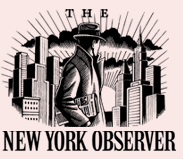 This in fact is pretty much business as usual in the Big Apple, and has been for quite some time. During any in-season four-month stretch over the past decade, a selection of three dozen shows involving or highlighting women would have represented nothing new; indeed, at the moment it manifests a rather quaint retro quality. Which can also be said of this event’s nominal jumping-off point, the traveling survey exhibition “A History of Women Photographers,” currently making its debut at the New York Public Library (Fifth Ave. And 42nd St., through January 4). The problems inherent in this extensive anthology differ only slightly from those of the hefty 1994 book by photo historian Naomi Rosenblum, from which it springs and with which it shares both title and structure.
This in fact is pretty much business as usual in the Big Apple, and has been for quite some time. During any in-season four-month stretch over the past decade, a selection of three dozen shows involving or highlighting women would have represented nothing new; indeed, at the moment it manifests a rather quaint retro quality. Which can also be said of this event’s nominal jumping-off point, the traveling survey exhibition “A History of Women Photographers,” currently making its debut at the New York Public Library (Fifth Ave. And 42nd St., through January 4). The problems inherent in this extensive anthology differ only slightly from those of the hefty 1994 book by photo historian Naomi Rosenblum, from which it springs and with which it shares both title and structure.
Do we in fact need such a project? The written histories of photography that I encountered from the mid-1960s up through the present hardly lack for women practitioners in all the medium’s forms. Dorothea Lange, Imogen Cunningham, Julia Margaret Cameron, Margaret Bourke-White, Gertrude Kasebier, Lisette Model and many more have been active reference points for myself and everyone else in the field during the almost three decades that I’ve been studying and writing about the medium. Nor were their reputations established posthumously; none of them experienced anything one could reasonably call neglect during their working lifetimes, including those who worked during the nineteenth century. How does a superficial survey of their output such as this one — one photo, or at most two, apiece, plus random snippets of biographical information — enhance our understanding of anything?
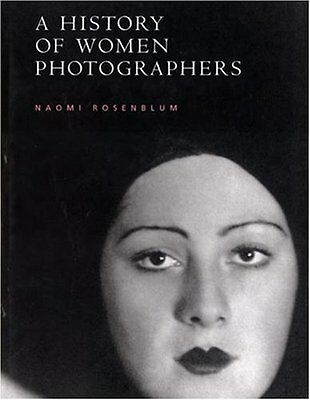
Naomi Rosenblum, A History of Women Photographers (1994), cover
The late Beaumont Newhall and Helmut Gernsheim, who authored influential one-volume synoptic histories of the medium that served as the standard references in the field through the early 1980s, simply do not come across as absolutely single-gendered as does art historian H. W. Janson. Perhaps that was due to their own inclinations, perhaps to the influence of their wives as active partners in their research and writing, perhaps to their belief in an inherent egalitarianism embedded in the medium, or perhaps simply to the visible and undeniable active participation of women in photography from its inception. Whatever the reasons, women photographers appear in even the early editions of Newhall and Gernsheim, many not only spotlighted but unequivocally elevated to the pantheon. If these tomes read nowadays as primarily histories of men in photography, the difference is statistical, not hierarchical.
This is not to deny that there’s a definite charm, and a real charge, to reading Ms. Rosenblum’s well-written, quasi-Newhallian synoptic A History of Women Photographers (Abbeville Press, $60 hardbound) or to perusing a visual version thereof in this exhibition, co-curated by Ms. Rosenblum and Barbara Tannenbaum of the Akron Art Museum. One gets to follow a by-now familiar story — the standard account of the medium’s chronological, technological, and morphological evolution — populated and enacted by an almost entirely new cast of characters of another gender. The effect is, to say the least, intriguing.
Does that mean it fills some crucial lacuna? I’m not sure that it does, even if the labor involved in this attempt to span that perceived gap demands respect. That there might exist a market for such a study, even a demand for it, does not make it necessary (though it may have made it inevitable).
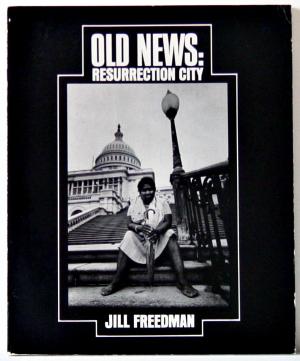
Jill Freedman, “Old News: Resurrection City” (1970), cover
The show divides its more than 200 vintage prints and related artifacts (books, magazines, and other materials) into eight sections: four on landscape, the nude, the still life, the portrait, and four more on documentary, experimental, “narrative and allegorical,” and “fashion, advertising and theatrical” photography. By representing 214 photographers, it sacrifices depth for breadth. The sheer number of names becomes at once persuasive — clearly there were a lot of women in photography during the middle years of this century — and numbing. This viewer, at least, ended up wanting more from the most notable of these people (or, barring that, more from any of them) and fewer names illustrated in passing.
The implication of this survey, clearly, is that these photographers — at least the ones we don’t know — have been heretofore neglected. Indeed, the accompanying brochure makes that charge explicit: “Women have been a persistent and important, but largely overlooked, presence in photography since the medium was first introduced in 1839,” it begins. As indicated earlier, that does not jibe with my own experience. That there are better-known and lesser-known photographers here should go without saying. Some of them, who deserve our most serious attention, have indeed slipped through the cracks of historical consideration; but it seems to me that’s more the result of the general disregard (until the last decade or so) of historianship of photography as a serious and worthy discipline than of some gender bias against women practitioners. The woman who called herself Claude Cahun, for example, has been no more or less neglected than Pierre Molinier, with whom she had things in common.
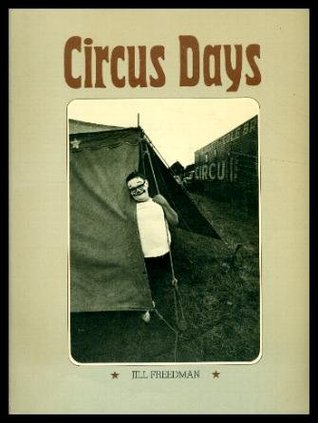
Jill Freedman, Circus Days (1975), cover
Moreover, to judge by the evidence on view, there are a great many people in this show whose work will not prove to be a significant contribution to the medium even if fully restored and brought to light. Oh, it will provide a rich mine for the academic art-history industry, the doctoral-dissertation mill, and the scholarly-monograph trade; it will provide supportive evidence for just about any thesis concerning women and photography that anyone comes up with; and it will doubtless tell us something about the sociology and economics of the medium, about the transmission of photographic ideas among the bit players, and so on. But it will produce few individual images that will stop anyone in their tracks, and even fewer bodies of work that will shift the way anyone thinks about how photographs can be made.
This show’s central flaw is that, by going for quantity over quality, it homogenizes everything into some vast purée in which Lange’s “Migrant Mother” seems little different than the humdrum output of a workaday studio portraitist. (The one advantage of this scattershot approach is that it demonstrates the wide variety of physical artifacts that photographers generate; but that is a truth about photography, not about its female practitioners per se.) Rather than restoring to the medium’s history the names of dozens and dozens of workers who have justifiably been forgotten, I’d sooner have seen these curators devote serious attention — including some serious writing — to recuperating whoever they consider to be the twelve most important among the comparatively neglected. There’s important work to be done on Cahun, Ruth Orkin, Grete Stern, Jill Freedman, Marion Palfi, Florence Henri, and Anne Brigman, for example; and a show spotlighting their work and exploring it at length would be more persuasive an appeal for restoration of critical attention than this diffuse hodgepodge.
•
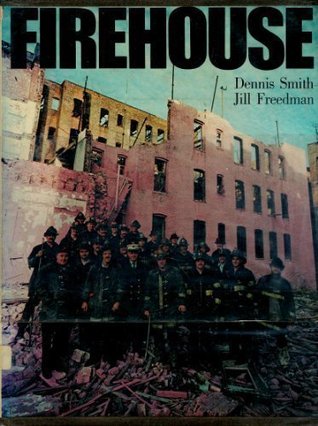
Jill Freedman and Dennis Smith, Firehouse (1977), cover
Perusing the entire fall festival’s offerings, I find the most obvious effort to argue for reconsideration of a genuinely neglected figure to be the Witkin Gallery’s mini-retrospective of the work of the documentarian Jill Freedman (415 W. Broadway, through January 11).
Long a familiar presence in the New York photo scene, Ms. Freedman is the archetypal self-taught photographer, a bohemian who busked her way across Europe, settled in the quintessential Greenwich Village apartment (a sprawling, high-ceilinged space on Sullivan Street, immediately upstairs from “The Fantasticks,” where she lived for decades), picked up a 35-mm. camera on a whim and found her calling.
A people-watcher by inclination, she has a keen eye for nuances of facial expression and body language, and an attunement to the subtleties of proxemics — the spatial relationships people establish between and around themselves, and the way those translate into photographic representation. She also appears to have understood intuitively the requirements for constructing a visually engaging image. So her work appeared fully fledged from the outset. Drawn primarily to people in their social context as raw material for her vision, adventurous and seemingly fearless, she has the gift of gab, a finely tuned ear for the telling comments of others, and the ability to write a convincingly personal prose. Image-text relationships have always drawn her, and her life’s work has invariably resolved into book form. She’s produced six so far, and is at work on a seventh, supported with an Alicia Patterson Foundation journalism fellowship.
For the first of these, Ms. Freedman planted herself in Resurrection City, the extended civil-rights live-in that took place in Washington, DC in the late 1960s. Unlike most photojournalists covering this story, who went home to their snug beds at night, this photographer lived with her subjects and wrote the story of that extraordinary experiment in protest and community from an insider’s point of view.
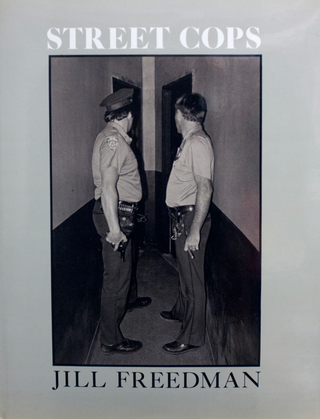
Jill Freedman, Street Cops (1982), cover
In subsequent projects, she ran away with the circus, based herself in a New York City police station and then a firehouse, and returned again and again to Ireland. Along the way, she photographed dogs, for which she feels a special affection. As this suggests, there’s a mix of the tough-minded and the tender-hearted in all her projects. Like her idol, the late W. Eugene Smith, she has the empathetic capacity to convince the viewer that he or she is seeing the situation at hand not through the photographer’s eyes but from the subjects’ point of view.
Mostly, her insightful black-and-white images and wry, succinct, perceptive texts seek out the everyday manifestations of fundamental human decency, our moments of grace and generosity to each other and to living things generally: playing the accordion to the howls of one’s dog, bringing your Shetland pony into the pub and giving him a foaming glass of beer, sharing whatever food you have with the tent next door in the rain at the Washington Monument. However, she has a sharp nose for injustice and inhumanity, wherever it manifests itself. Her current work-in-progress — bits and pieces of which have been published so far — addresses the Holocaust; she’s been talking with survivors and traveling with them on pilgrimages to the death camps. It seems likely to prove her grittiest statement to date, and her fiercest polemic.
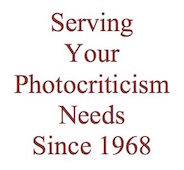 Ms. Freedman now lives in Florida, where a newspaper last winter profiled her. The writer of that feature story called me for some background, and quoted me as saying this: “[Freedman] has had a tendency to want to move on to the next project. It’s meant that she hasn’t capitalized on each project, in a careeristic sense. People haven’t seen the scope of her work. Certainly, to my mind, she is one of the great unsung documentary photographers of her generation.” I’ll stand by all of that, and think that this current show — some 60 prints of images made over a 30-year stretch — provides persuasive supporting evidence.
Ms. Freedman now lives in Florida, where a newspaper last winter profiled her. The writer of that feature story called me for some background, and quoted me as saying this: “[Freedman] has had a tendency to want to move on to the next project. It’s meant that she hasn’t capitalized on each project, in a careeristic sense. People haven’t seen the scope of her work. Certainly, to my mind, she is one of the great unsung documentary photographers of her generation.” I’ll stand by all of that, and think that this current show — some 60 prints of images made over a 30-year stretch — provides persuasive supporting evidence.
Does it strike anyone else but me as strange that, in the past two decades’ worth of argument over documentary in photography, her name has gone largely unmentioned? Or that historians will go scrabbling around in the leavings of defunct, reticent, privileged amateurs like Alice Austen and Marjorie Content rather than grapple with the significant, published output of a living, breathing photographer who has functioned independently from the beginning and, without family wealth or husband to rely on, found ways of supporting herself and her work outside the academy and the grants system?
Just asking.
•
This post sponsored by a donation from Carlyle T.
•
Special offer: If you want me to either continue pursuing a particular subject or give you a break and (for one post) write on a topic — my choice — other than the current main story, make a donation of $50 via the PayPal widget below, indicating your preference in a note accompanying your donation. I’ll credit you as that new post’s sponsor, and link to a website of your choosing.
 Include a note with your snail-mail address (or email it to me separately) and I’ll include three (3!) copies of The Silent Strength of Liu Xia, the catalog of the 2012-13 touring exhibition of photos by the dissident Chinese photographer, artist, and poet, who, after eight years of extralegal house arrest in Beijing, finally got released and expatriated to Germany in 2018. The only publication of her photographic work, it includes all 26 images in the exhibition, plus another 14 from the same series, along with essays by Guy Sorman, Andrew Nathan, and Cui Weiping, professor at the Beijing Film Academy. Keep one for yourself, share the others with friends.
Include a note with your snail-mail address (or email it to me separately) and I’ll include three (3!) copies of The Silent Strength of Liu Xia, the catalog of the 2012-13 touring exhibition of photos by the dissident Chinese photographer, artist, and poet, who, after eight years of extralegal house arrest in Beijing, finally got released and expatriated to Germany in 2018. The only publication of her photographic work, it includes all 26 images in the exhibition, plus another 14 from the same series, along with essays by Guy Sorman, Andrew Nathan, and Cui Weiping, professor at the Beijing Film Academy. Keep one for yourself, share the others with friends.






Indeed.
I read Rosenblum’s book within the last year or so, and it was refreshing to see her conclusion that women, in fact, take pretty much the same pictures men do.
Contemporary “theory” seems to believe that the women (and people with other special identities) take different pictures, in deeply important but curiously undefinable ways. This is easily the most frustrating thing I find in contemporary thinking about photography, and to my mind it speaks to the shabby state of affairs in the area.
My disagreement with the formulation you summarize goes back to my January 1974 New York Times review of Anne Tucker’s book The Woman’s Eye, which bases itself on that very premise — the first book to do so, if I remember correctly. I didn’t find persuasive the argument for some ineffable female quality to photographs by women 45 years ago, and don’t find it more compelling today.